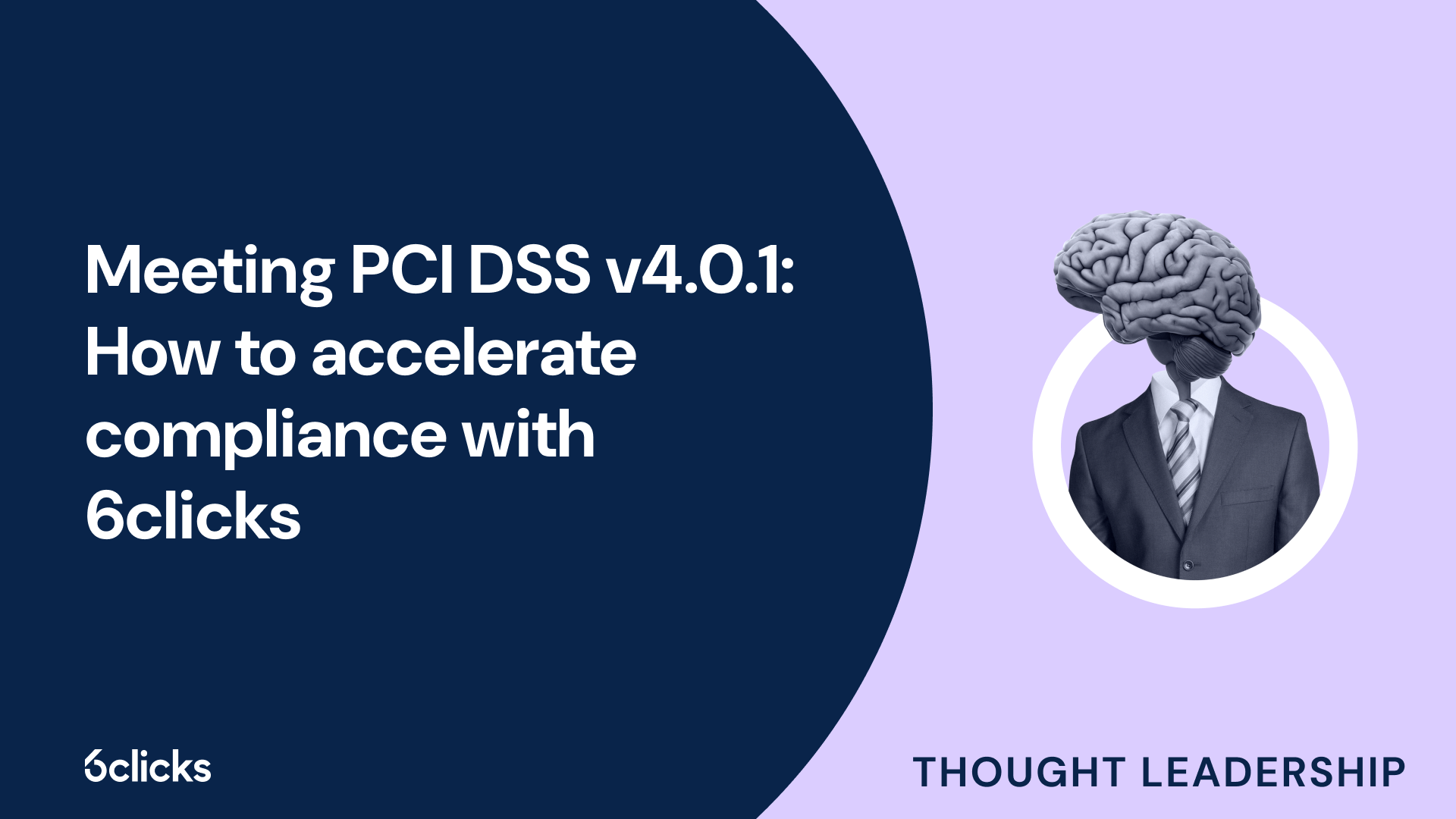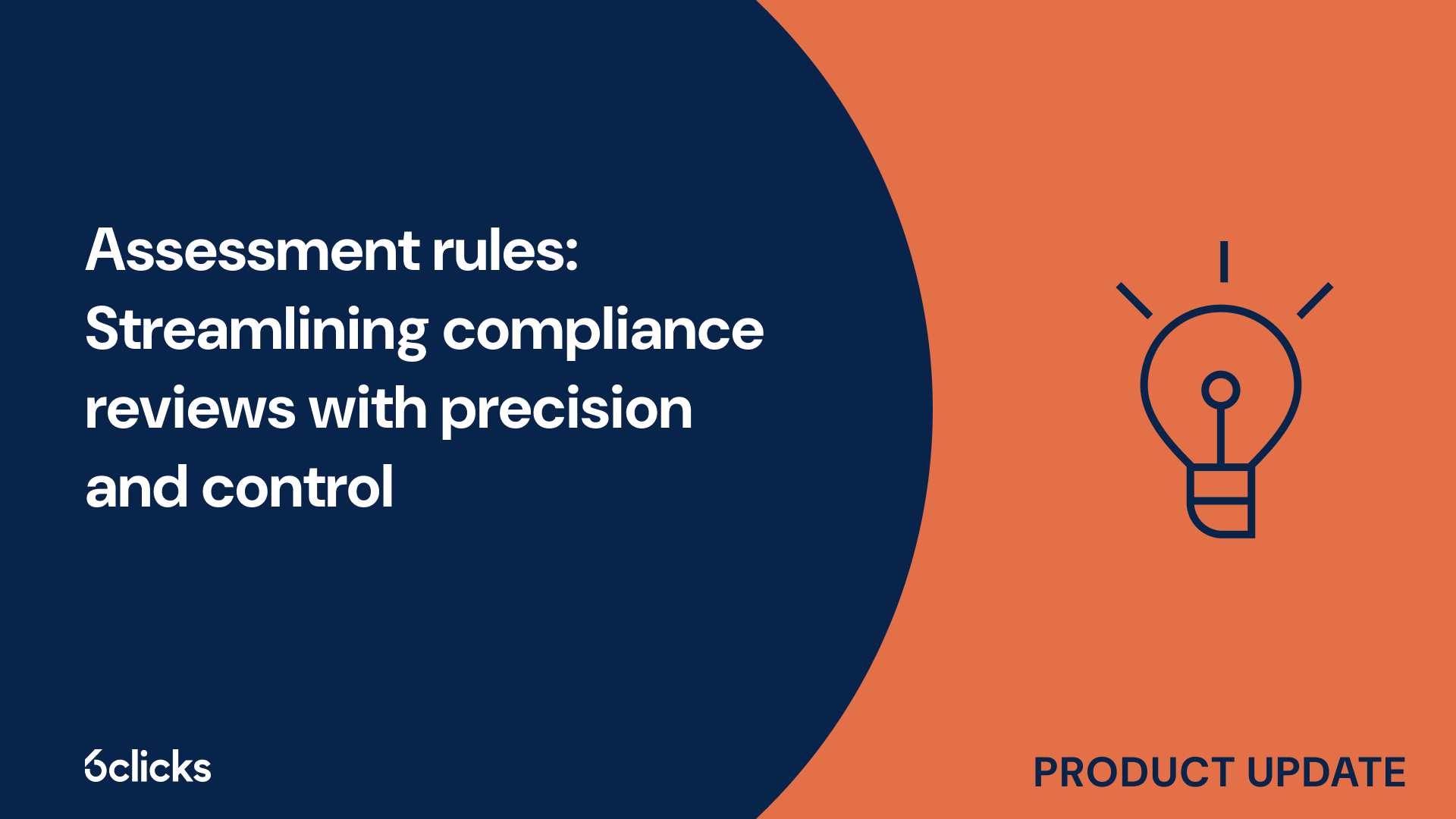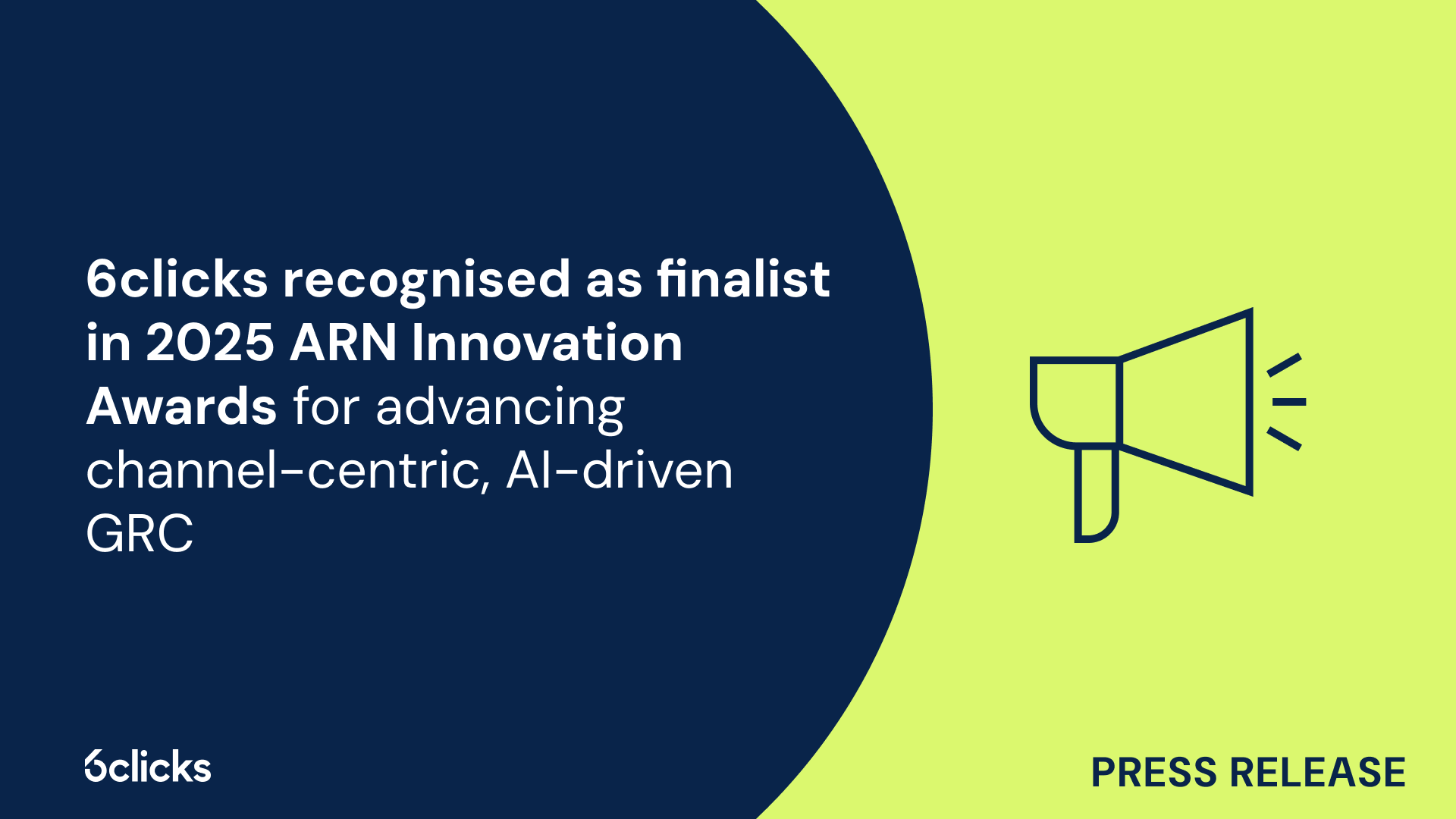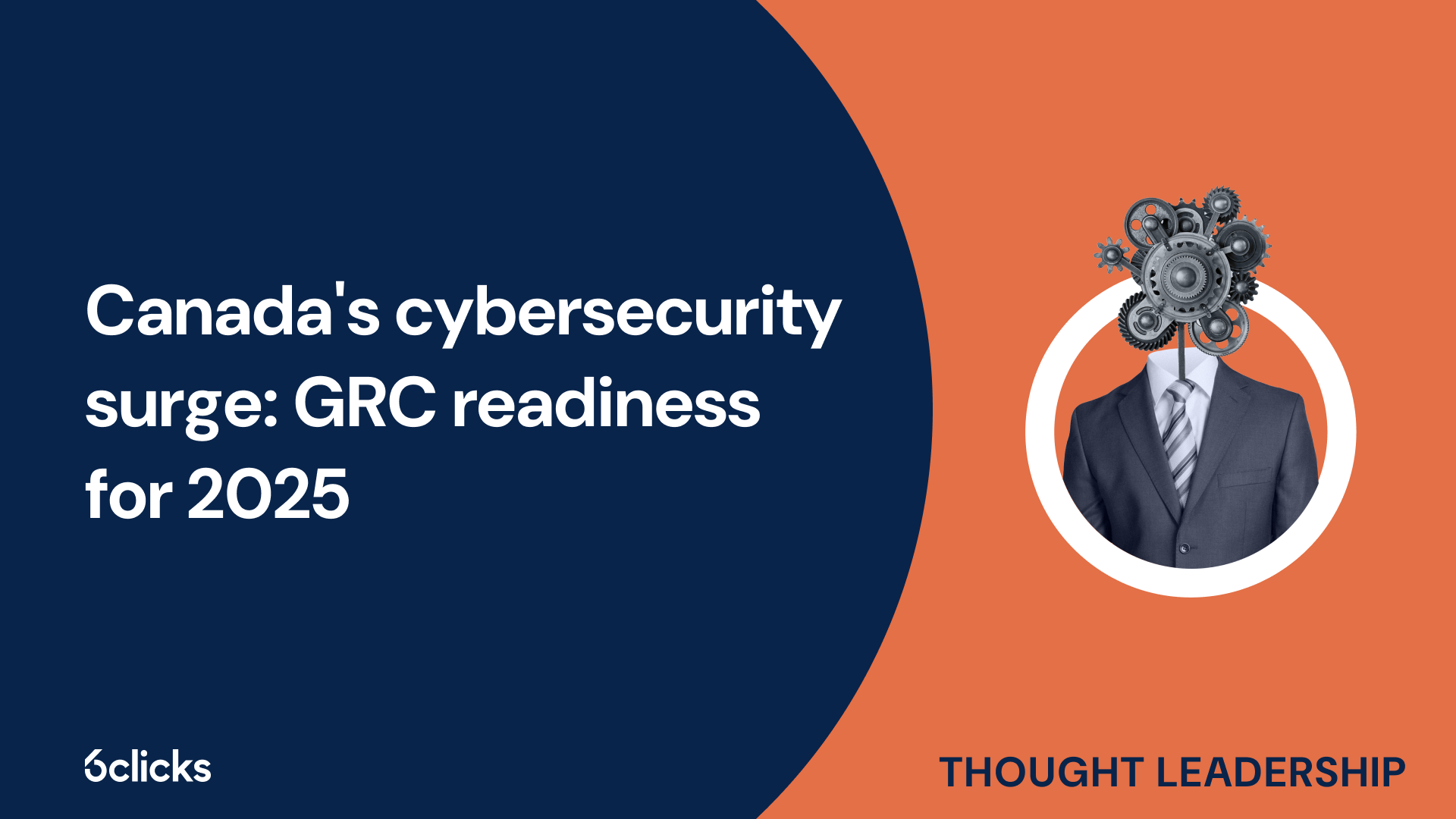Cyber resilience in 2025: Your smart guide to NIST CSF
Boost your organization's cyber resilience with this expert guide to the NIST Cybersecurity Framework. Learn to assess risk, improve security posture, and automate compliance with AI-powered tools.
-1.png?width=200&height=249&name=Group%20193%20(1)-1.png)
Cyber resilience in 2025: Your smart guide to NIST CSF
What is NIST 800-53?
NIST 800-53 is a comprehensive set of cybersecurity controls for federal information systems and organizations. Developed by the National Institute of Standards and Technology (NIST), the document outlines the security requirements that federal agencies must adhere to in order to protect sensitive information and mitigate cybersecurity risks. It covers a wide range of areas including access controls, privacy controls, security control baselines, configuration management, risk management, contingency planning, and security training, among others. While primarily designed for federal government agencies, NIST 800-53 can also be utilized by non-regulatory agencies and organizations to enhance their security posture and protect their organizational assets. The controls provided in NIST 800-53 serve as a foundation for establishing a robust security program and can be customized based on the specific needs and requirements of the organization. By implementing these controls, organizations can mitigate various threats such as insider threats, hostile attacks, human errors, and natural disasters, enabling them to protect their critical infrastructure and maintain the trust and confidentiality of their information.
Overview of the standard
NIST 800-53 is a widely recognized cybersecurity standard that provides a comprehensive catalog of controls and security requirements for federal information systems and organizations in the private sector. Developed by the National Institute of Standards and Technology (NIST), this standard is crucial in establishing the security posture of government agencies and ensuring the protection of sensitive information.
Over time, the NIST 800-53 standard has evolved through various revisions, with the most recent being Revision 5. This revision marks a significant shift by removing the word "federal" from the title to reflect its applicability to both federal agencies and non-regulatory organizations. This change emphasizes the value of the standard beyond the federal government and highlights its relevance to a wide range of industries.
Revision 5 of NIST 800-53 also introduces several key changes. One notable addition is the integration of privacy controls, recognizing the importance of addressing privacy risks alongside cybersecurity concerns. This inclusion aims to enhance the protection of personally identifiable information and further ensure the privacy of individuals.
Additionally, Revision 5 adopts an outcome-based approach to controls, emphasizing the desired security outcomes rather than prescribing specific methods or technologies. This shift allows organizations to implement controls that best suit their unique environments and align with their risk management strategy.
Control families
Control families are an essential aspect of the NIST 800-53 standard and provide a comprehensive framework for protecting information and systems. These control families serve as a catalog of controls that organizations can utilize to address various security requirements. Each control family focuses on a specific area of security, such as access controls, configuration management, contingency planning, and more. These control families contribute to an organization's overall security posture by providing a baseline of security controls that can be customized and enhanced through the incorporation of control enhancements. By adhering to these control families, organizations can better manage risks, protect organizational assets, and ensure the integrity, confidentiality, and availability of their information systems.
Access controls
Access controls play a critical role in the overall security posture of federal information systems. As outlined in NIST 800-53, access controls are implemented to regulate and control the access to applications and sensitive information.
There are several types of access controls that are defined within the control families of NIST 800-53. These control families provide a structured framework for federal agencies to manage access to their systems effectively. The control families that are relevant to access controls include:
- AC: Access Control - These controls are aimed at ensuring that only authorized individuals have access to sensitive information and resources.
- AU: Audit and Accountability - These controls focus on monitoring and tracking access activities to detect any unauthorized access attempts or suspicious activities.
- IA: Identification and Authentication - These controls verify the identity of users and ensure that they are who they claim to be before granting access to systems.
- PE: Physical and Environmental Protection - These controls aim to protect physical infrastructures and resources, such as data centers or server rooms, where access controls are enforced.
By implementing access controls, federal agencies can limit access to sensitive data to only those individuals who require it for their job function. This helps in mitigating the risk of insider threats, unauthorized access, and unauthorized disclosure of information. Access controls also play a crucial role in protecting systems and data from external threats, such as malicious actors attempting to gain access to critical infrastructure.
Awareness and training
The Awareness and Training control family is an essential component of NIST 800-53, aimed at enhancing the cybersecurity posture of federal agencies. This control family focuses on providing security training and maintaining records to increase awareness and equip staff with the necessary knowledge to identify and respond to potential threats effectively.
The purpose of the Awareness and Training control family is to ensure that all system users receive appropriate training to understand their role in maintaining the security of organizational systems and data. By promoting awareness, organizations can empower their employees to stay vigilant against cyber threats and adopt best practices in safeguarding sensitive information.
Organizations are required to provide foundational awareness training to all system users. This training should cover basic cybersecurity concepts, such as password hygiene, social engineering awareness, and incident reporting. Additionally, advanced awareness training should be provided to individuals with significant security responsibilities or access to sensitive information. This training may include topics like secure coding practices, secure configuration management, and incident response procedures.
To effectively implement the Awareness and Training control family, organizations must maintain records of the training provided to employees. These records should include details such as the date of training, the content covered, and the individuals who have completed the training. Regular assessments and evaluations should also be conducted to ensure the effectiveness of the training program.
By prioritizing security training and records, federal agencies can enhance awareness among their staff, fostering a proactive security culture and mitigating the risks associated with cyber threats.
Audit and accountability controls
Audit and accountability controls play a vital role in an organization's overall security posture by ensuring the integrity, confidentiality, and availability of audit information. These controls are defined in the NIST 800-53 standard, which provides guidance for federal agencies and other organizations on security and privacy controls.
The purpose of audit and accountability controls is to track system activity, investigate potential security incidents, and monitor compliance with security policies and procedures. By implementing these controls, organizations can gain insights into their systems' security and identify vulnerabilities or unauthorized activities promptly.
Within the AU control family, there are specific controls that address different aspects of audit and accountability. For instance, audit logging control requires organizations to generate audit records for system and user activities. These records capture essential information like event types, timestamps, and user identities, helping establish an audit trail and facilitate security investigations.
Report generation control ensures that organizations can generate accurate and comprehensive reports based on audit log data. These reports are crucial for monitoring system activity, identifying security weaknesses, and demonstrating compliance with applicable regulations or standards.
Protection of audit information control focuses on safeguarding audit records and logs from unauthorized access, modification, or deletion. This control ensures the integrity and availability of audit information, enabling organizations to rely on it for incident response, forensic analysis, and compliance auditing.
Configuration management controls
The Configuration Management (CM) family in NIST 800-53 focuses on managing, assessing, and improving the configuration of software and systems. These controls aim to establish a disciplined and structured approach to configuration management, ensuring the integrity and security of organizational systems.
One essential control within the CM family is the Baseline Configuration control. It requires organizations to develop and maintain a baseline configuration for their information systems. The baseline configuration serves as a reference point, providing a known, secure state that can be used for comparison when assessing the configuration of systems. It helps organizations identify and address any deviations from the established baseline, ensuring that systems remain in a secure and compliant state.
Another important control is the Information System Component Inventories control. It requires organizations to develop and maintain inventories of information system components, including hardware, software, and firmware. By keeping track of these components, organizations can effectively manage and control changes, as well as assess the impact of configuration changes on system security and functionality.
Additionally, the Security Impact Analysis control requires organizations to assess the security impact of proposed changes to the information system's configuration. This analysis helps organizations evaluate the potential risks and identify any mitigating measures needed before implementing configuration changes. By conducting a thorough security impact analysis, organizations can ensure that changes do not adversely affect the confidentiality, integrity, or availability of their systems.
Identification and authentication controls
Identification and authentication controls play a crucial role in protecting the identity of users and devices within an organization. These controls are outlined in the NIST 800-53 control family, which provides guidance for federal agencies and other organizations in establishing and maintaining effective security measures.
The purpose of identification controls is to uniquely identify users and devices, while authentication controls verify the claimed identity of these entities. By implementing these controls, organizations can ensure that only authorized individuals and approved devices gain access to sensitive information and systems.
Some specific controls within the Identification and Authentication control family include:
- Identification and Authentication Policy and Procedures: This control establishes the rules and guidelines for the identification and authentication process within an organization, ensuring consistency and compliance.
- Identifier Management: This control addresses the creation, issuance, and revocation of unique identifiers for users and devices. It helps prevent unauthorized access by ensuring that only legitimate entities are granted access.
- Authenticator Management: This control focuses on the proper management and maintenance of authenticators used for user or device authentication, such as passwords or biometric data. It includes aspects such as password complexity requirements and secure storage mechanisms.
- Access Tokens: This control governs the use and management of access tokens, such as smart cards or security tokens, which are used for authentication purposes. It ensures that access tokens are issued, distributed, and revoked securely.
By implementing these controls, organizations can establish a strong foundation for protecting the identity of users and devices within their networks. Identification and authentication controls help prevent unauthorized access, mitigate the risk of insider threats, and contribute to a robust security posture.
Incident response controls
NIST 800-53 outlines comprehensive incident response controls that organizations can implement to effectively handle cybersecurity incidents. These controls are essential for federal agencies and other government entities to protect their sensitive information and maintain a robust security posture.
One crucial aspect of incident response controls is the establishment of clear policies and procedures. These policies and procedures define the organization's response to incidents and provide guidance to personnel involved in incident response efforts. It includes steps for identifying, containing, eradicating, and recovering from incidents, as well as reporting and documenting the entire incident response process.
Training is another vital component of incident response controls. Organizations should ensure that their personnel, including incident response teams, are adequately trained to recognize and respond to different types of incidents effectively. Regular training sessions help personnel stay updated on the latest threats and best practices, enabling them to respond swiftly and efficiently.
Testing and monitoring are integral to incident response controls as well. Regular testing exercises, such as tabletop simulations or penetration testing, enable organizations to evaluate the effectiveness of their incident response plans and identify any gaps or areas for improvement. Continuous monitoring of networks and systems helps detect and respond to security incidents promptly.
Reporting is crucial for incident response controls as it facilitates information sharing and enables organizations to learn from past incidents. Organizations should have mechanisms in place to report incidents to appropriate authorities, such as cybersecurity agencies or regulatory bodies, as required by their industry or jurisdiction.
Finally, having a comprehensive incident response plan is essential for organizations to effectively respond to incidents. This plan should outline the necessary steps, roles and responsibilities, and communication channels during an incident, ensuring a coordinated and swift response.
By incorporating these incident response controls outlined in NIST 800-53, organizations can be better prepared to detect, contain, and recover from cybersecurity incidents, minimizing their impact and reducing overall risk.
Maintenance controls
Maintenance controls within the NIST SP 800-53 standard play a critical role in managing system maintenance tasks, such as software updates, logging, and inspection tools. These controls provide a framework for organizations to establish and enforce policies and procedures related to system maintenance, ensuring the security and privacy of the organization's information systems.
One of the primary purposes of maintenance controls is to ensure that software updates, patches, and bug fixes are promptly applied to mitigate vulnerabilities and protect against potential threats. By regularly updating software, organizations can address known vulnerabilities and enhance the overall security posture of their systems.
Logging controls are also essential for system maintenance. These controls require organizations to enable and configure system logs, capturing relevant information about system activities, user actions, and security events. Logging provides organizations with crucial information for incident response and forensic analysis, aiding in the detection and investigation of security incidents.
Inspection tools are another aspect of maintenance controls. These tools allow organizations to monitor the integrity and security of their systems by regularly scanning for vulnerabilities, conducting security assessments, and ensuring proper system configuration. Inspection tools provide organizations with valuable insights into potential weaknesses and help identify and remediate vulnerabilities before they can be exploited.
Media protection controls
Media protection controls are an essential aspect of the NIST 800-53 framework. These controls ensure the safeguarding of physical media, including storage devices, by implementing access controls, marking, storage policies, transport policies, sanitization procedures, and defined organizational media use.
Access controls are vital in media protection to restrict unauthorized individuals from accessing sensitive information stored on physical media. These controls include password protection, biometric authentication, or physical locks to secure the media and prevent unauthorized access.
Storage policies dictate how physical media should be stored when not in use. These policies outline guidelines for protecting media from theft, damage, or unauthorized alteration. Examples may include storing media in locked cabinets or secure rooms with restricted access.
Transport policies focus on the secure handling and transportation of physical media. These policies may require the use of tamper-evident packaging, tracking mechanisms, or designated personnel responsible for transporting and safeguarding the media during transit.
Media protection controls also include marking requirements to clearly identify classified or sensitive information on physical media. Marking may include labels, stamps, or tags indicating the sensitivity level or classification of the media.
Sanitization controls address the proper disposal or decommissioning of media. These controls ensure that sensitive data is completely removed or destroyed from physical media before its disposal, reuse, or retirements. Techniques such as degaussing, shredding, or secure wiping are commonly used for media sanitization.
The specific controls in the Media Protection family of NIST 800-53 that cover how media and files are used, stored, and safely destroyed include:
- MP-1: Media Protection Policy and Procedures
- MP-2: Media Access
- MP-3: Media Marking
- MP-4: Media Storage
- MP-5: Media Transport
- MP-6: Media Sanitization and Disposal
- MP-7: Media Use
These controls collectively ensure that physical media, containing sensitive information, is properly protected throughout its lifecycle and that appropriate measures are taken to prevent unauthorized access, mitigate risks, and maintain the confidentiality, integrity, and availability of organizational data.
Physical and environmental protection controls
Physical and environmental protection controls are an essential component of NIST 800-53, designed to safeguard systems, buildings, and supporting infrastructure against physical threats. These controls are imperative in maintaining the security and integrity of the environment in which information systems operate.
The implementation of physical and environmental protection controls involves several measures. Physical access authorizations play a crucial role in restricting entry to authorized personnel only. This includes the use of access badges, keycards, or biometric authentication methods to ensure that only authorized individuals can access sensitive areas.
Monitoring systems are put in place to detect and record any unauthorized or suspicious activities. These systems may include the use of surveillance cameras, intrusion detection systems, or security guards to maintain a vigilant watch over the premises.
Visitor records are maintained to keep track of individuals who access the premises. This helps in identifying and investigating any potential security breaches or incidents involving visitors.
Emergency shutoff controls are implemented to mitigate risks during emergencies or security incidents. These controls allow for the quick and efficient shutdown of systems or facilities to prevent further damage or unauthorized access.
Power, lighting, fire protection, and water damage protection controls are also in place to ensure the safety and functionality of the physical environment. This includes measures such as backup power generators, fire suppression systems, adequate lighting, and safeguards against water damage.
Some specific controls within the Physical and Environmental Protection control family in NIST 800-53 include PE-1: Physical and Environmental Protection Policy and Procedures, PE-2: Physical Access Authorizations, PE-3: Physical Access Control, PE-4: Access Control for Transmission Medium, PE-5: Visitor Access Records, and PE-6: Monitoring Physical Access.
Planning controls
Planning controls within the NIST SP 800-53 standard are essential for organizations to effectively manage cybersecurity and privacy-related risks. These controls focus on the creation and approach to cybersecurity and privacy-related plans, providing guidelines on how to develop effective strategies for protecting systems and managing potential threats.
One crucial planning control is the risk assessment control. This control requires organizations to conduct regular assessments to identify and understand potential risks to their systems and data. By analyzing possible threats, vulnerabilities, and potential impacts, organizations can develop proactive risk management strategies to mitigate the identified risks effectively.
Another important planning control is program management. This control ensures that organizations establish and maintain a comprehensive cybersecurity program. It includes creating policies, procedures, and guidelines to guide employees in adhering to cybersecurity best practices. Effective program management also involves defining roles and responsibilities within the organization for handling cybersecurity-related tasks and establishing mechanisms for measuring the effectiveness of the program.
Program management controls
Program Management controls are an essential component of the NIST 800-53 control family, playing a critical role in effectively managing cybersecurity and privacy programs within organizations. These controls are designed to ensure the establishment and maintenance of a comprehensive cybersecurity program that addresses the specific needs and requirements of federal agencies and other organizations.
One key aspect of Program Management controls is the development and implementation of critical infrastructure plans. These plans help organizations identify and prioritize their critical assets and systems, define the necessary security controls and measures, and establish a framework for their ongoing protection and management. By aligning cybersecurity efforts with critical infrastructure plans, organizations can effectively safeguard their most important assets and systems from potential threats and attacks.
In addition, Program Management controls also encompass the creation of information security program plans. These plans provide a roadmap for organizations to implement and manage their cybersecurity programs by detailing the necessary policies, procedures, guidelines, and best practices. Information security program plans help organizations establish a strong foundation for managing cybersecurity risks, ensuring consistency and adherence to established standards and regulations.
Furthermore, effective Program Management controls require organizations to develop robust risk management strategies. These strategies involve the identification, assessment, and mitigation of risks to organizational assets, systems, and data. By implementing risk management strategies, organizations can proactively identify potential threats and vulnerabilities, develop appropriate control measures, and continuously monitor and improve their security posture.
Risk assessment controls
Risk assessment is a critical component of the NIST 800-53 controls, which focuses on identifying and mitigating risks within organizations and systems. The standard provides a comprehensive set of controls that assist in the risk assessment process.
The NIST 800-53 controls address risk assessment through various control families. One such family is the "Risk Assessment" family, which includes controls like RA-1 (Risk Assessment Policy and Procedures) and RA-2 (Security Categorization). These controls establish the framework for conducting risk assessments within an organization.
Other control families that address risk assessment include "System and Services Acquisition" and "Information Systems Monitoring." Controls such as SA-11 (Developer Security Testing and Evaluation) and SI-4 (System Monitoring) require organizations to assess risks during software development and continuously monitor their systems for ongoing risk identification.
Moreover, the standard also includes controls within the "Risk Management Strategy" family, such as PM-9 (Risk Management Strategy) and PM-11 (Mission and Business Process Definition), which emphasize the need for organizations to establish a risk management strategy and identify the risks associated with mission-critical business processes.
By incorporating these risk assessment controls, NIST 800-53 helps organizations systematically identify risks, prioritize them based on their potential impact, and implement appropriate controls to mitigate those risks. This approach enables organizations to make informed decisions about their security posture, allocate resources effectively, and enhance their overall resilience against threats and vulnerabilities.







